The results consist of a set of information available on this web site:
Historically, the genesis of DRAIN & BRAIN comes from founding meetings. First of all the meeting (since 2012) with Prof. Amaresh CHAKRABARTI of the Indian Institute of Sciences, Bengalore, world specialist in the field of design, and that of Pr. Anil Kumar Gupta from the Indian Institute of Management Ahmedabad whose Gandhian philosophy strongly influenced the creation of DRAIN & BRAIN. Pr. Gupta is the founder of the famous Honey Bee Network http://www.sristi.org/hbnew/
(Additional explanations in section 2.3 on AK GUPTA).
The advantage of DRAIN & BRAIN lies in the symbiosis formed by its technological offer and its educational offer.
Proposal: DRAIN differentiates itself from existing systems by its frugal approach applied throughout its life cycle.
DRAIN is a system dedicated to a housing, it can be oversized or multiplied depending on the number of people in the housing. Rain harvesting is the simplest and most effective system. Dew capture is more complex because it involves a set of parameters: outside temperature, humidity, clear night, temperature of the material (sail), area and orientation of the capturing surface, wind, .... The best estimates of dew capture are in the order of 0.5 L per m² of surface area (Ref. OPUR, engineering sciences). 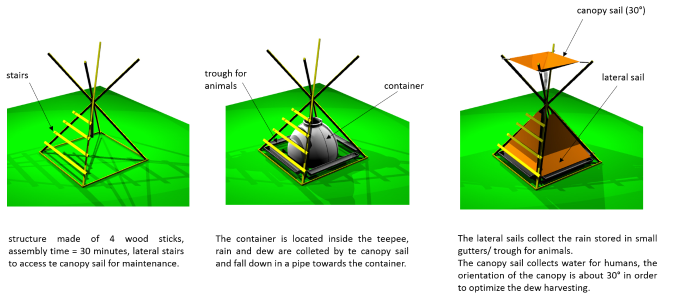
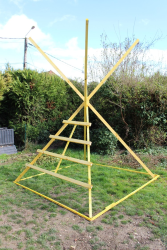
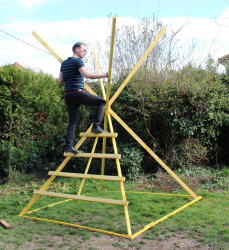

Proposal: BRAIN differentiates itself from existing training through its immersive approach based on changes in learning/training postures. 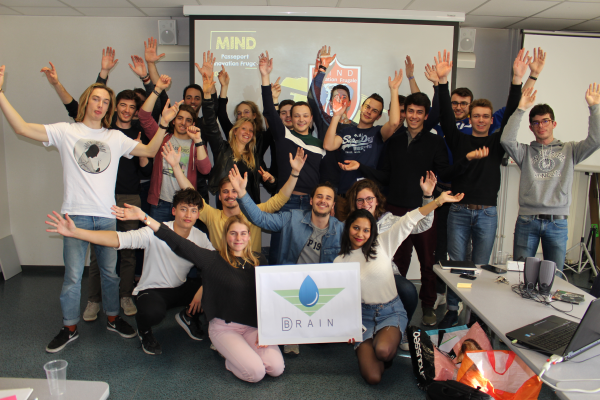
The BRAIN pedagogical course is validated by ECTS credits, it corresponds to an organization called MIND project at UTT.
The first partnership is carried out with Togolese partners: the Togolese NGO TOMOKA and the French NGO FELICITE. The challenge is to work on themes for the development of the rural village Kpekpeta.
INNOVATE, SPREAD, CELEBRATE.
These basic principles are engaged with the Kpekpeta village in Togo. Innovations are underway, spreading will take place in the village in January 2020, but the celebration has already been initiated. Following the exploratory mission of Serge ROHMER in Togo with TOMOKA and FELICITE, it was immediately decided to organize a celebration that will mark each year the privileged ties that unite the partners. It was decided to organize this celebration during the dry season, at the date of the World Day of African Culture (UN). In 10 days, the festivities were planned, co-financed and organized on Saturday 26 January 2019 (photos below).
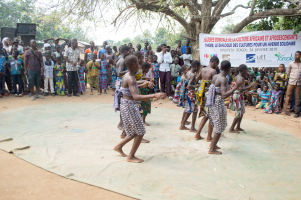
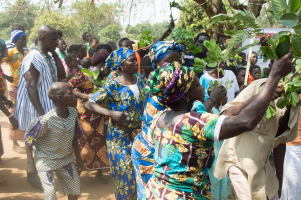
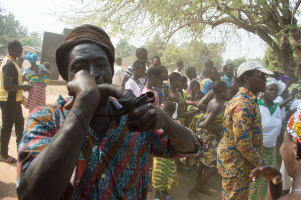
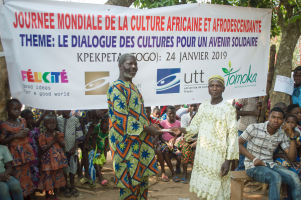
French version: Télécharger le fichier «DRAIN ASSEMBLAGE.pdf» (1.1 MB)
English version: Download the file «DRAIN ASSEMBLY.pdf» (1.1 MB)
a) Mission letter "celebration "
The aim is to create an event (CELEBRER) that initiates the students' journey, while involving the staff of the institution.
Télécharger le fichier «LETTRE MISSION amphi.docx» (23.5 KB)
b) other mission letters
- Scientific papers (conferences, journals)
- Technological description of products (product sheet)
1) Scientific production
(Request full text to serge.rohmer@utt.fr)- Icord'17 (India 2017) : "Disassembly for Redesign" - The paper focuses on technologies for purifying unsafe water. Based on the analysis of existing purifiers, a new distiller is proposed for a domestic usage. A prototype is described and tested, aiming at the validation of the concept.Then, a dysfunctional analysis highlights recommendations for its improvements. A second version is proposed to fix the failures by taking into account frugal considerations for developing countries. A discussion is finally engaged to define the advantages and the limits of the second prototype, in terms of technical performances and based on frugal considerations.
- ICEASSM17 (Ghana 2017) : paper dedicated to the description of a water distiller according to frugal concepts; The proceedings of the conference will be next published (Springer).
- ICED17 (Canada 2017) : "Measuring Frugality. Application to a Solar Water Distiller" - soon available
2) DRAIN & BRAIN
DRAIN & BRAIN aims to train responsible engineering students through an immersive NORTH-SOUTH program dedicated to solving the societal challenge of access to water for all.Historically, the genesis of DRAIN & BRAIN comes from founding meetings. First of all the meeting (since 2012) with Prof. Amaresh CHAKRABARTI of the Indian Institute of Sciences, Bengalore, world specialist in the field of design, and that of Pr. Anil Kumar Gupta from the Indian Institute of Management Ahmedabad whose Gandhian philosophy strongly influenced the creation of DRAIN & BRAIN. Pr. Gupta is the founder of the famous Honey Bee Network http://www.sristi.org/hbnew/
(Additional explanations in section 2.3 on AK GUPTA).
The advantage of DRAIN & BRAIN lies in the symbiosis formed by its technological offer and its educational offer.
- DRAIN, technology offer : frugal water collection system by dew and rain.
- BRAIN, educational offer : immersive and collaborative North-South training course.
2.1. Technical Offer DRAIN
DRAIN (Dew and RAIN Harvesting) is a frugal system for collecting dew and rain water for domestic use for populations without access to running water.Proposal: DRAIN differentiates itself from existing systems by its frugal approach applied throughout its life cycle.
- frugality in construction: constructible by the population, based on local resources, does not require specific technical knowledge.
- frugality in use: does not require special skills for its use, water recovery is done simply in the container located under the tipi for the inhabitants, and in the side troughs for the animals.
- frugality in maintenance and recycling: maintenance is limited to rinsing the manifold after the first rains to remove dust and other waste.
DRAIN is a system dedicated to a housing, it can be oversized or multiplied depending on the number of people in the housing. Rain harvesting is the simplest and most effective system. Dew capture is more complex because it involves a set of parameters: outside temperature, humidity, clear night, temperature of the material (sail), area and orientation of the capturing surface, wind, .... The best estimates of dew capture are in the order of 0.5 L per m² of surface area (Ref. OPUR, engineering sciences).




DRAIN construction, photos © Serge Rohmer 2019.
2.2. Pedagogical offer BRAIN
BRAIN (Behavioral Responsibility towards Sustainability ) is a path of acquisition of knowledge, know-how and know-how linked to the technological offer.Proposal: BRAIN differentiates itself from existing training through its immersive approach based on changes in learning/training postures.
- The student engineer engages in an immersive process NORTH-SOUTH by contacting a population of a BoP country (Base of Pyramid) in order to contextualize the technological offer DRAIN. Students learn from populations.
- The immersive process amplifies with the population through the implementation of the technological offer. The student becomes a trainer.
- The pedagogical aspect is also visualized on the side of people who are building skills through the collaborative process. A festive event finalizes the cooperation between the partners. The student becomes the equal of the population.
- The final step is the transmission of the student engineer’s course to a student of the new DRAIN & BRAIN class. The student trains another student.

First students of the DRAIN & BRAIN project
The BRAIN pedagogical course is validated by ECTS credits, it corresponds to an organization called MIND project at UTT.
The first partnership is carried out with Togolese partners: the Togolese NGO TOMOKA and the French NGO FELICITE. The challenge is to work on themes for the development of the rural village Kpekpeta.
2.3. DRAIN & BRAIN package
The DRAIN & BRAIN symbiosis is based on the philosophy of Pr. Anil Kumar GUPTA, founder of the very famous Indian network Honey Bee Network. Prof Gupta was invited to France for a set of conferences coordinated by the UTT (CREIDD team). He is the mentor of the DRAIN & BRAIN approach which is based on the following principles :INNOVATE, SPREAD, CELEBRATE.
These basic principles are engaged with the Kpekpeta village in Togo. Innovations are underway, spreading will take place in the village in January 2020, but the celebration has already been initiated. Following the exploratory mission of Serge ROHMER in Togo with TOMOKA and FELICITE, it was immediately decided to organize a celebration that will mark each year the privileged ties that unite the partners. It was decided to organize this celebration during the dry season, at the date of the World Day of African Culture (UN). In 10 days, the festivities were planned, co-financed and organized on Saturday 26 January 2019 (photos below).




© Photos TOMOKA 2019 - 7 traditional dance groups competed in front of many villagers, each was rewarded in front of a delegation of officials.
2.4. Communication Kit
2.4.1. A flexible logo
The DRAIN & BRAIN logo is available in a blank version to allow users to appropriate it with their own color code by filling the horizontal lines symbolizing the canopy sail.
2.4.2. Construction sheets
French version: Télécharger le fichier «DRAIN ASSEMBLAGE.pdf» (1.1 MB)English version: Download the file «DRAIN ASSEMBLY.pdf» (1.1 MB)
2.4.3. Videos
Coming soon...2.4.4. Mission letters
a) Mission letter "celebration "
The aim is to create an event (CELEBRER) that initiates the students' journey, while involving the staff of the institution.
Télécharger le fichier «LETTRE MISSION amphi.docx» (23.5 KB)
b) other mission letters
Coming soon...
2.4.5. Organization of a Festive Federator Event
Each country organises a festive event according to their cultural context. For the version with Togo, see section 2.3.Date of update 10 janvier 2020

